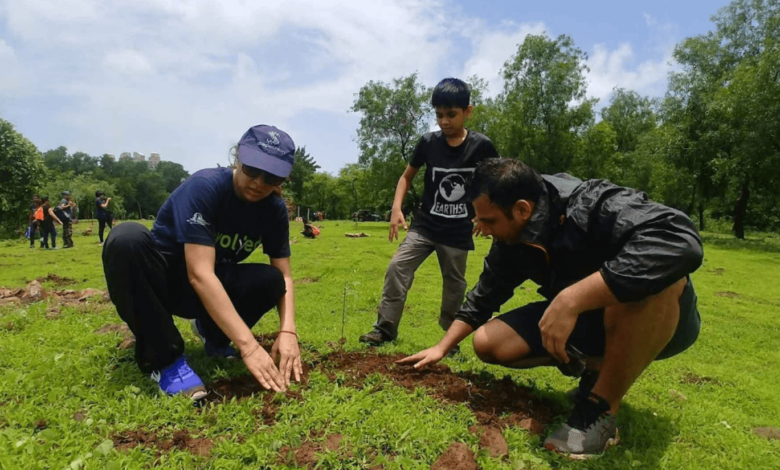Maintaining Biodiversity in Urban Gardens

Urban gardens may be small, but they hold big potential when it comes to supporting biodiversity. As cities expand and green spaces shrink, local wildlife often finds itself pushed out, but your garden can help change that.
With the right approach, even the smallest patch of soil can become a thriving habitat.
Urban gardens don’t just add charm. They offer a lifeline to bees, birds, insects, and native plants. By creating these green pockets, we help nature flourish right alongside us, building more sustainable, resilient, and beautiful cities in the process.
Choose Native Plants That Belong
One of the simplest and most effective ways to encourage biodiversity is starting with native plants. These are species that naturally belong to your region, meaning they’ve evolved to thrive in your climate and soil.
They typically need less water, resist local pests better, and rarely require chemicals to stay healthy.
However, it’s not just about maintenance. Native plants play a vital role in feeding and sheltering local wildlife. For example, primroses attract butterflies, while elderberry bushes provide food for birds. Even lowly ferns can become cosy homes for small critters.
In the UK, popular native picks like bluebells, foxgloves, and hawthorn bring colour to your space while offering nectar, shelter, and nesting materials for wildlife. If you need ideas, a trusted gardening service can provide region-specific advice tailored to your outdoor space.
Promote Diversity
When it comes to urban biodiversity, variety is everything. A garden filled with different shapes, sizes, textures, and bloom times not only looks stunning, but it’s also far more inviting to wildlife.
Think flowering plants, leafy shrubs, fruiting vines, and ground cover, all mingling in one lush, layered space.
This variety makes your garden more resilient, too. Pests are less likely to overrun a garden with a diverse plant mix, and pollinators will always find something in bloom.
Choose species with different heights and flowering seasons to create a landscape that stays vibrant and useful year-round.
Here’s a bonus. Native plants are typically low-maintenance. So while they’re busy supporting the local ecosystem, they’re also saving you time and effort.
Create Welcoming Habitats
Nature loves a little wildness. By carving out corners of your garden specifically for wildlife, you’re turning your green space into a sanctuary. Birdhouses, bat boxes, and insect hotels may seem simple, but they create essential nesting and shelter spaces for urban wildlife.
Even letting a section of your garden grow wild, with tall grasses, tangled shrubs, or fallen logs, can make a big difference. It gives insects, birds, and small mammals a place to feed, hide, and raise their young.
Want to attract even more life? Add a birdbath, a shallow pond, or even a dish of water on hot days. You’ll be amazed how quickly frogs, bees, and dragonflies start to visit.
When possible, use natural, untreated materials for these features. Wood, stone, or recycled items blend with the environment and won’t harm delicate species.
Best of all, these small touches are affordable, easy to set up, and perfect for anyone gardening in the city.
Try Companion Planting
Companion planting is more than just clever. It’s a gentle, chemical-free way to support biodiversity in your garden. By pairing up the right plants, you can naturally boost growth, deter pests, and attract helpful insects.
Take basil and tomatoes, for instance. Basil repels tomato hornworms while helping the tomatoes thrive. Marigolds near peppers can chase off aphids, and nasturtiums planted around cabbage deter cabbage moths.
These thoughtful pairings reduce the need for chemical sprays and pesticides, keeping your garden safer for bees, butterflies, and birds. They also help you get more out of your growing space, making it productive, healthy, and buzzing with life.
If you want to take it further, keep a garden journal. Track which combinations work well, what insects visit, and what challenges pop up. Over time, you’ll build a personalised playbook for a thriving, biodiverse garden.
Embrace Organic Gardening
Going organic in the garden isn’t just trendy. It’s transformative. Especially in urban areas, where concrete and pollution are part of everyday life, organic gardening offers a welcome escape. It’s a chance to reconnect with nature in a meaningful, low-impact way.
Ditching synthetic fertilisers and pesticides reduces harm to beneficial insects and birds. Instead, use compost and organic mulch to enrich your soil naturally. This builds healthy plant roots, encourages microbial life, and improves the entire ecosystem from the ground up.
Planting pollinator-friendly flowers, like lavender, echinacea, or sunflowers, adds a splash of colour while drawing in bees and butterflies. Designating chemical-free zones in your garden gives wildlife a safe place to land, feed, and nest.
The long-term perks? Healthier soil, stronger plants, and a lower carbon footprint. It’s also often more cost-effective since you’re reusing materials like food scraps and garden waste to feed your plants. Going organic means your garden works with nature, not against it.
Read also: Unlock the True Potential of Your Plants with Canna Boost Accelerator
Go Vertical
When you’re short on space, the only way is up. Vertical gardening is a brilliant solution for small urban plots or balcony gardens. By using trellises, hanging baskets, or wall planters, you can turn blank walls and fences into vertical habitats bursting with life.
Not only does it maximise growing space, but it also creates new perches, shelters, and feeding spots for birds and insects. Trailing plants, vines, and climbers like clematis or ivy add texture and colour while offering shade and cover.
Vertical gardens need a little upkeep; watering and trimming regularly is key, but the payoff is huge: more greenery, more wildlife, and a lot more personality in compact spaces.
Build a Gardening Community
Gardens can do more than support wildlife. They can bring people together. Whether it’s a shared allotment, a rooftop garden, or a tiny patch outside a block of flats, gardening with neighbours creates connections that go far beyond plants.
Community gardening encourages people to share knowledge, tools, and time. Events like seed swaps, biodiversity workshops, or garden open days are not just fun. They spread eco-friendly practices and build pride in local spaces.
As these networks grow, they create a ripple effect: more people get involved, more gardens pop up, and more urban biodiversity takes root. It’s a win for nature and for the community.
Keep an Eye on Your Garden’s Health
Even the most biodiverse garden needs a little monitoring. Observing how your plants are growing, which insects are visiting, and how the seasons affect your space helps you fine-tune your approach.
Notice a decline in pollinators? Maybe it’s time to add more flowering species. Are certain plants struggling? Swapping them out for better-suited native varieties can make all the difference.
Keeping a simple log or journal of what you see helps you respond quickly and make decisions based on real, local changes.
You can even get involved with citizen science projects or biodiversity surveys, contributing to a broader understanding of how nature is doing in your area.
Regular weeding, spot checks for pests, and small adjustments help keep the garden balanced, not just for you, but for the creatures who’ve made it their home.
Conclusion
Urban gardens, no matter how small, can have a powerful impact. By planting native species, supporting wildlife, and avoiding harmful chemicals, you’re creating a space where biodiversity thrives.
But more than that, you’re helping build greener, more connected cities—places where people and nature coexist in harmony.
With each flower, pond, or bee-friendly bloom, you’re doing more than gardening. You’re nurturing a piece of the wild right where it’s needed most.




